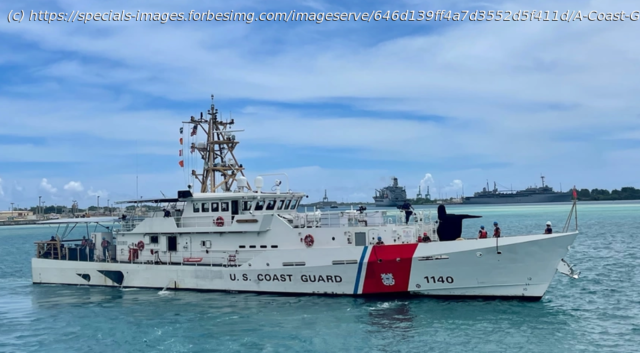America’s rivals in the Pacific may take advantage of Guam’s troubles to cause trouble of their own.
As China tensions simmer across the Pacific, America’s Western Pacific redoubt of Guam is girding for a knockout hit by Super Typhoon Mawar. Guam—as well as the neighboring islands of Rota, Saipan, and Tinian—expects destructive winds of at least 150 mph, a massive storm surge, and flooding.
Conditions are expected to be so tough that President Joe Biden issued an emergency declaration hours before the Typhoon is expected to hit America’s endangered Pacific Territory.
Guam hasn’t taken a really direct hit from a “super typhoon” since 1962, when winds of nearly 200 miles per hour from Super Typhoon Karen “destroyed 95 percent of the homes on Guam”, inflicting damage “much more serious than that of 1944” when Japan and the United States fought over the island. It seems likely that much of the island will be “off-line” for days or weeks to come.
Cyclones, of course, are a way of life from Guam, but as the 210 square-mile island—only about three times the size of Washington DC—takes on and ever-more-important role in securing the Pacific, the national security risk from these weather-related disruptions increases as well.
Right now, Guam is an armed camp, host to several critical military facilities, and home to about 150,000 people. It is a critical mission enabler for the U.S. military.
The island’s military importance is set to grow. In January, as part of a shift from Japan, the U.S. Marine Corps opened Camp Blaz, a 4,000-acre facility, and their first new base in 70 years. Four nuclear submarines and two old submarine tenders, share the port of Apra with four Coast Guard cutters and some Military Sealift Command assets. More maritime force and support facilities are expected. On the north side of the island, the sprawling Anderson Air Force Base is often home to strategic bombers. The operational tempo is only increasing.
When weather looms, everything changes for this isolated U.S. bastion. Ships sortie, dispatched to safer harbors in Yap and elsewhere. Aircraft fly out to other, less prepared bases. And, as everyone else hunkers down in reinforced concrete shelters, waiting for electricity, communications, and key sensors to fail, Guam’s ability to contribute to security in the Pacific is abruptly limited.
Start
United States
USA — Sport China Eyes New Provocations As Super Typhoon Mawar Targets Guam Bases






